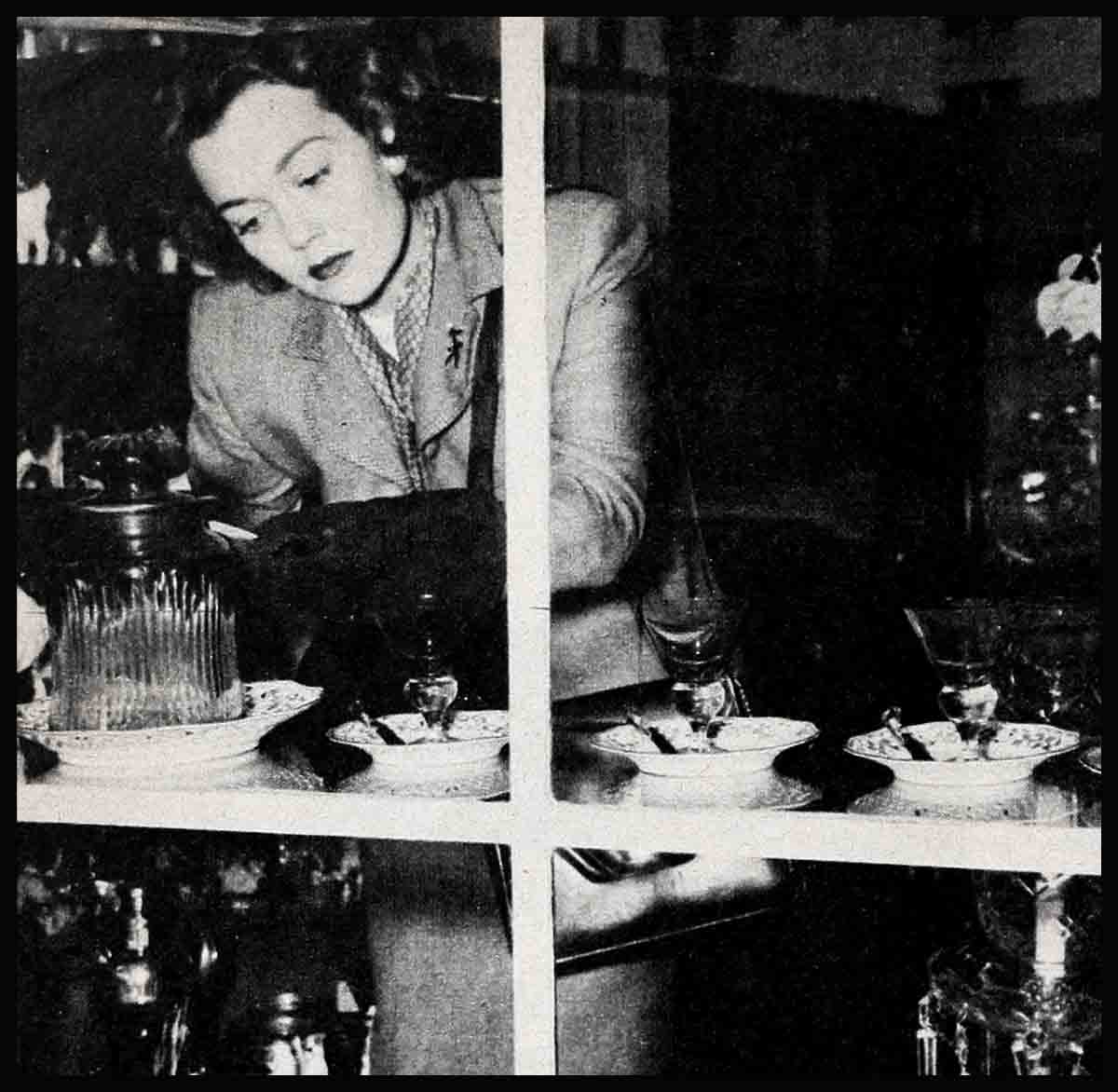
The Searching Heart—Jane Wyman
One thing’s for sure about Jane Wyman. She is different. She’s frank and she’s honest. None of that chi chi you get from some Hollywood residents. In fact, I never thought I’d hear a top star admit that fifty million Frenchmen didn’t even know her from the side of a barn. But all that “my-public-simply-adores-me” stuff is strictly for the birds, as far as Jane is concerned.
“Why, my name couldn’t even get me a hotel room in Paris,” says Jane, quite frankly. Seems that when Jane was in England, last summer, making “Stage Fright,” she decided that she and her very best friend, Betsy Kaplan, should have a weekend in Paris. “I needed laughs,” says Jane. “I hadn’t had any for two years.” Anyway, she told Betsy not to worry about a thing. Even though her French was limited to a few stock phrases, the name Jane Wyman would get them rooms in the best hotel. Just throw her weight around a bit, that’s all.
Jane goes into hysterics when she tells about it. The customs officials were not at all impressed when she showed them her passport. The porter wouldn’t let her use her few stock phrases. And the room clerk at the hotel couldn’t have been more bored. When Jane requested a suite for Jane Wyman and friend, the man simply shrugged and said, “Non, non.”
“Don’t you make no, no with me,” said Jane, taken down a peg. “Get the manager. The manager was as friendly as a cobra. Jane had fully expected to ask for the royal suite, but found herself expressing perfect contentment with a “broom closet.” “I asked for it,” she said grimly, “and I got it.”
And then an interesting thing happened. A woman recognized her on the street and shouted, “Johnnee Belinda!” Soon all Paris was shouting, “Johnnee Belinda” and begging for autographs. “When I got my hotel bill,” said Jane, “it was made out to Johnnee Belinda. And the years I’ve spent trying to make the name Jane Wyman a household word. Such is fame.”
Jane spent six long and tiring months in London making “Stage Fright,” produced and directed by Alfred Hitchcock, and starring, besides Jane, Marlene Dietrich, Michael Wilding and Richard Todd. In it she plays a student-actress who is studying at the Royal Academy of Dramatic Art (when Jane was awarded $4000 by the London Daily Express as “the best actress of the year” for her performance in “Johnny Belinda” she gave the check to the
Academy), and who poses as a Cockney dresser to a glamorous star, played by Marlene Dietrich. Jane is a meticulous and hard worker. She studied her Cockney accent from a little Cockney maid in her hotel. So, no quibbling about those “h’s.”
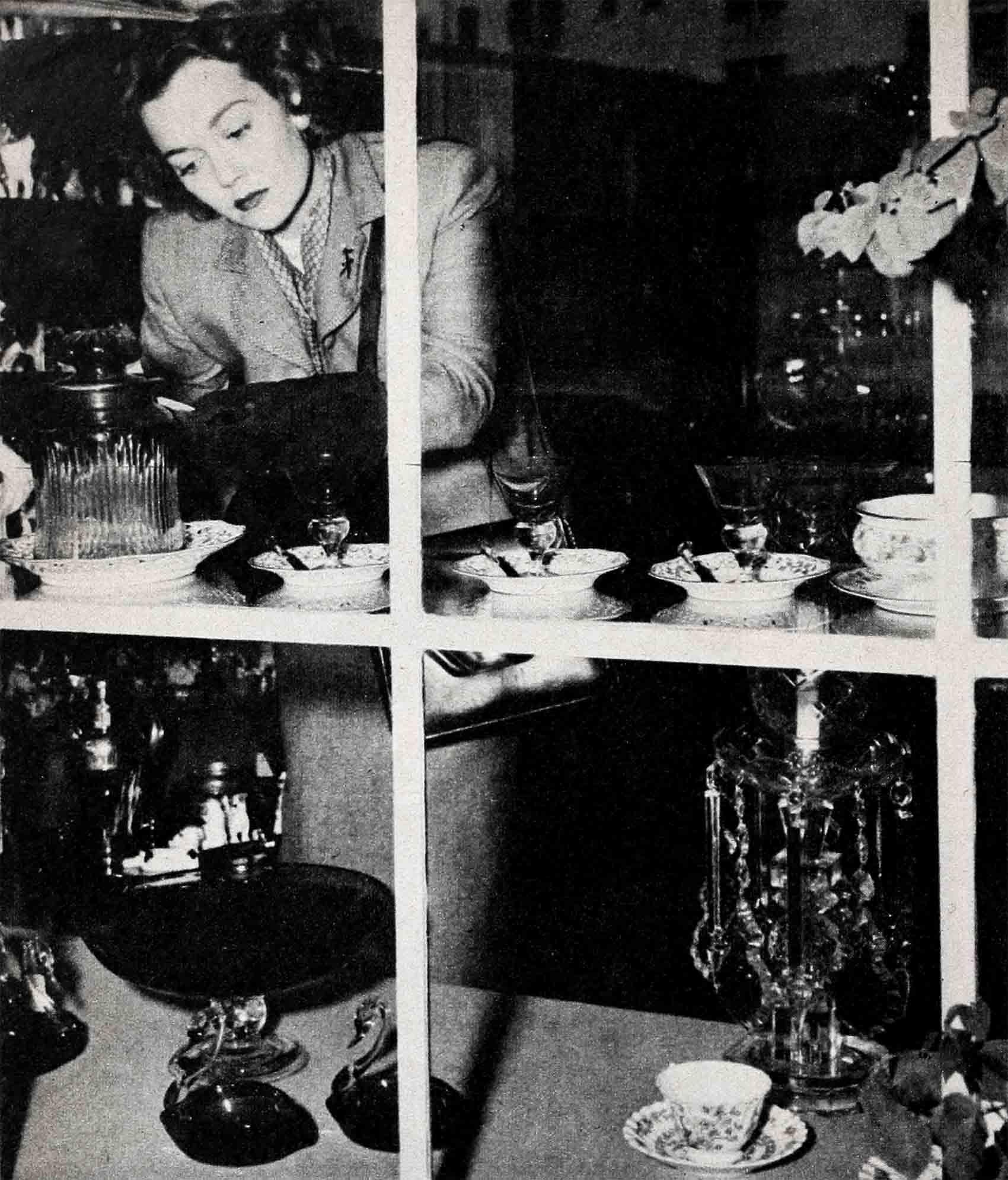
I think the biggest thrill Jane got out of making “Stage Fright” was meeting Marlene Dietrich. A celebrity herself, she stands in awe of other celebrities. All their years together in Hollywood they had never met. “I was seared to death of her,” said Jane, who is only one of Hollywood’s First Ladies, following her copping the Academy Award last March, and the Photoplay Gold Medal Award for giving the most popular performance by an actress for the year 1949. “But that Marlene—she was wonderful to me. She turned out to be the most fascinating person I’ve ever met. On days when she had no studio call she would come on the set just the same. She’d fix my dress, make suggestions about my hair and make-up, and help me in many ways.”
That proves it. Jane is not a jealous actress. Nor a suspicious one. Of course, there are those who would say that Dietrich, a smart cookie, and very wise in the ways of the cinema, came on the set to see that Janie wasn’t walking away with too much footage, and too many close-ups. But if anyone ever faintly suggested this to Jane he’d find himself clipped to a nubbin.
There is not an ounce of cattiness in Jane’s 118 perfectly distributed pounds. She has always gotten on well, and completely without friction, not only with the men in her pictures but, amazingly, with the women. She is not given to gossip. In fact, she loathes gossip. She carries a cigarette case which has engraved inside, “To criticize others is to be unsure of yourself.” She believes in tolerance, and practices it. With Ingrid Bergman being damned on all sides by her Hollywood confreres, Jane simply said, “Miss Bergman has a right to lead her own life.”
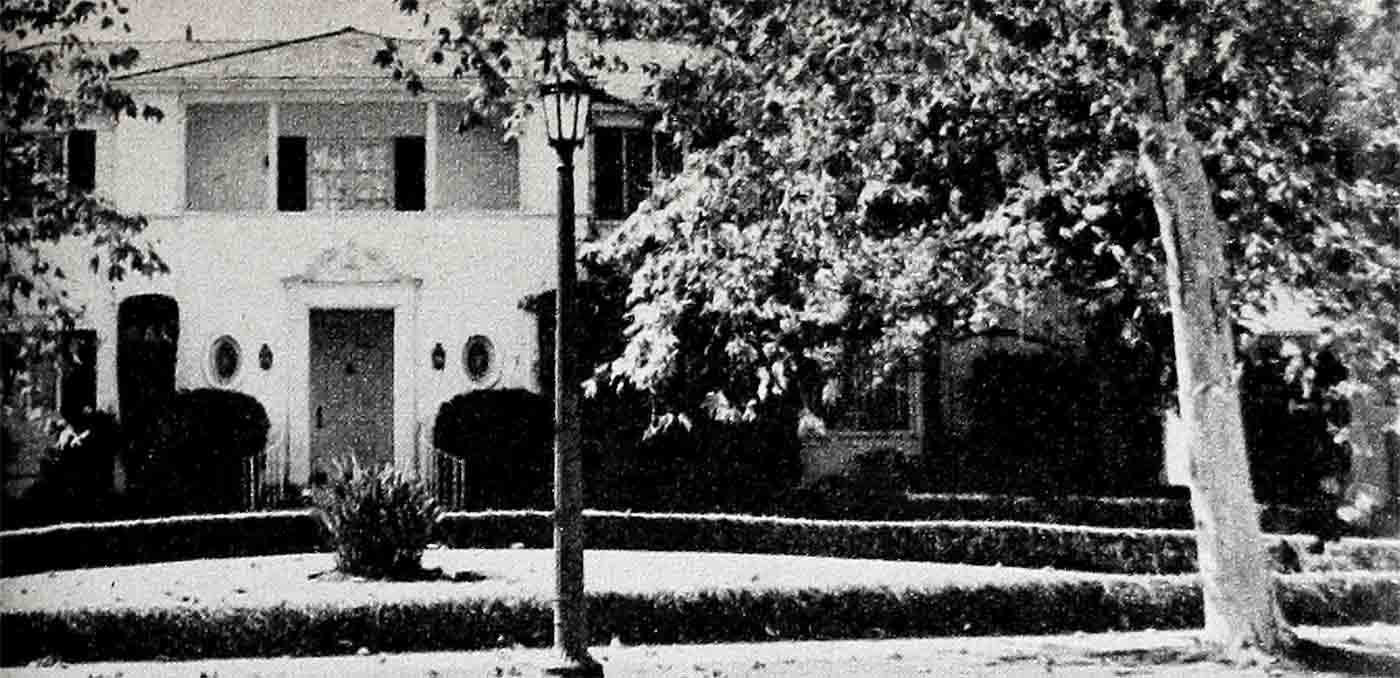
I knew Jane Wyman long before she won an Oscar. Long before she was famous enough to be caricatured in a song called “Be a Mess” in the Broadway musical revue, “Touch and Go.” Some ten years ago on a Warner Brothers set she told me, “I’ve become the Queen of the sub-plots. For seven years I’ve been the star’s confidante, adviser, chum, sister and severest critic. Sometimes I get a man, too, but the customers don’t worry about me until the star is safely engaged or married. But I’m not beefing. Being a sub-plotter is nice work. Maybe in ten years the front office will make me a plotter all by myself. And then some poor frustrated comedienne will have to advise me.”
Jane’s timing was off. It didn’t take ten years. Things got off to a start with “Princess O’Rourke,” in which she and Jack Carson sub-plotted Olivia de Havilland and Robert Cummings. She had a good scene in which she danced and quarrelled with Jack in a Chinese restaurant. When Paramount’s Charles Brackett was looking for a girl to try to save Ray Milland from his alcoholism in “The Lost Weekend” someone suggested Olivia de Havilland. Brackett ran “Princess O’Rourke” and was intrigued, not by Olivia, but by that little old sub-plotter, Jane Wyman. When Metro’s Clarence Brown was casting for the important role of drab, wonderful Ma Baxter in “The Yearling,” he remembered the girl in “The Lost Weekend” who was not too gentle, but had a lot of drive. Ma Baxter gave Jane faith in herself as an emotional actress. And it gave her her first crack at Hollywood’s jackpot—the Academy Award. The success of “The Yearling” made her a natural for “Johnny Belinda.”
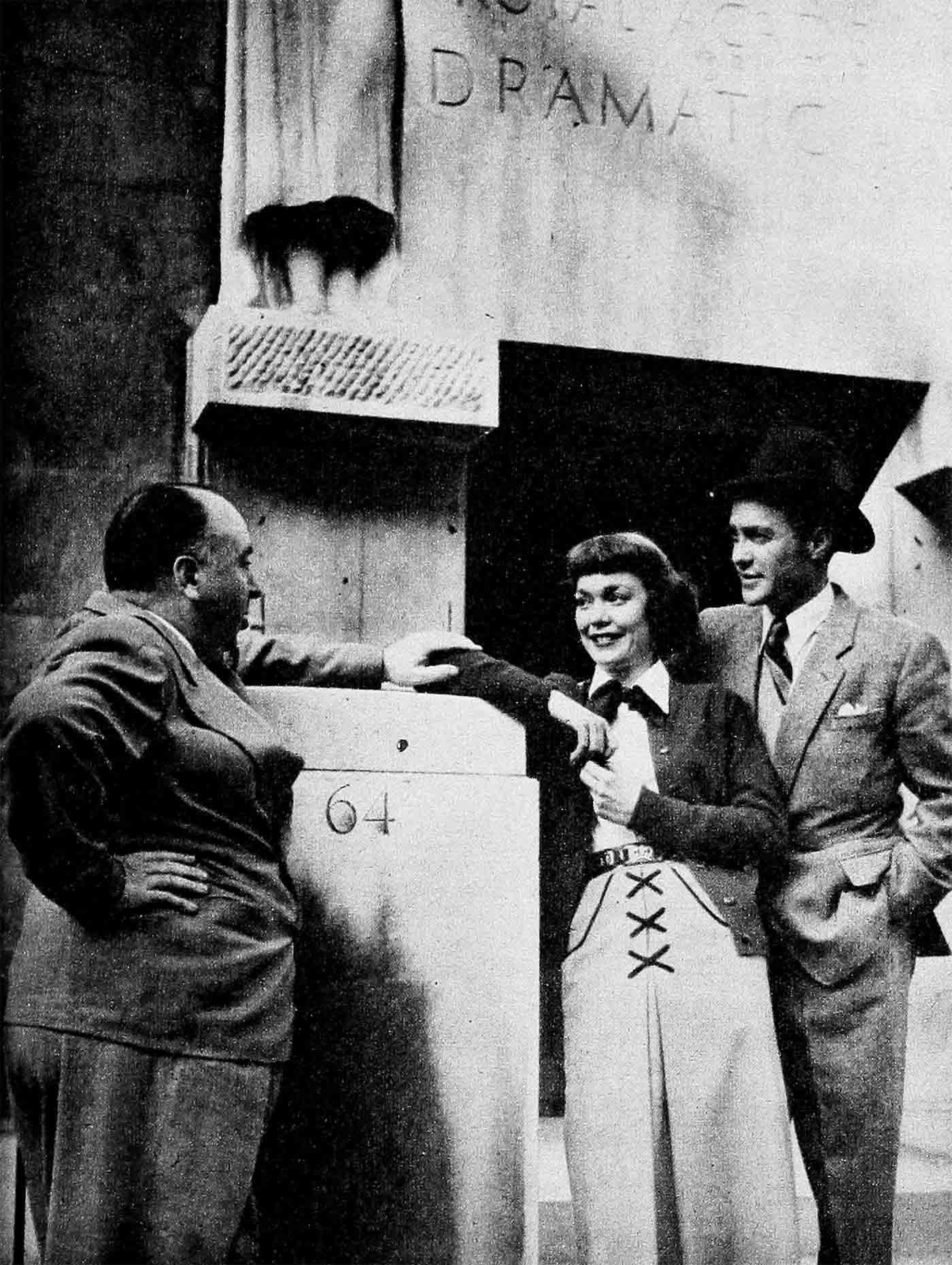
Most recently she played Laura, the crippled introvert, in Tennessee Williams’s “The Glass Menagerie.” Jerry Wald, producer, and Jane’s staunchest booster for fourteen years, is certain that Laura means another Oscar for Jane come March, 1951.
Jerry Wald knew Jane when he was a budding writer at Warners and she was playing Torchy Blane, fresh, flip and brassy as an old bedstead. “She isn’t fresh any more,” says Wald. “She’s mellowed, but not marshmellowed.” In the old days, according to Wald, Jane read a script, and ten minutes later she was in the picture. “A script was a script and to hell with it. Now she reads a script, studies the character for weeks and months, discusses it thoroughly, and has a deep and perfect understanding of the part before she goes before the cameras. Jane should never do comedies again. Comediennes in this town are a dime a dozen. She is a great dramatic actress.”
Stars usually get on very well with studio designers. And Jane is no exception. Milo Anderson has designed Jane’s clothes at Warners for years, and is one of Jane’s best friends. Jane, he reports, is a joy to work with. None of that temperamental star stuff. No fussing and fretting and ripping of seams. Her long slender legs, small waist and broad shoulders are pure delight.
Jane used to go for pink, blue and white,” says Milo. “Now she is on a gray, brown and black binge. However, she chose pink to wear to the Photoplay Gold Medal Awards dinner.”
Since her separation from Ronnie Reagan, Jane has lived in an eight-room house, designed by architect Paul Williams, in Bel-Air, with her two children, Maureen and Michael, and three servants.
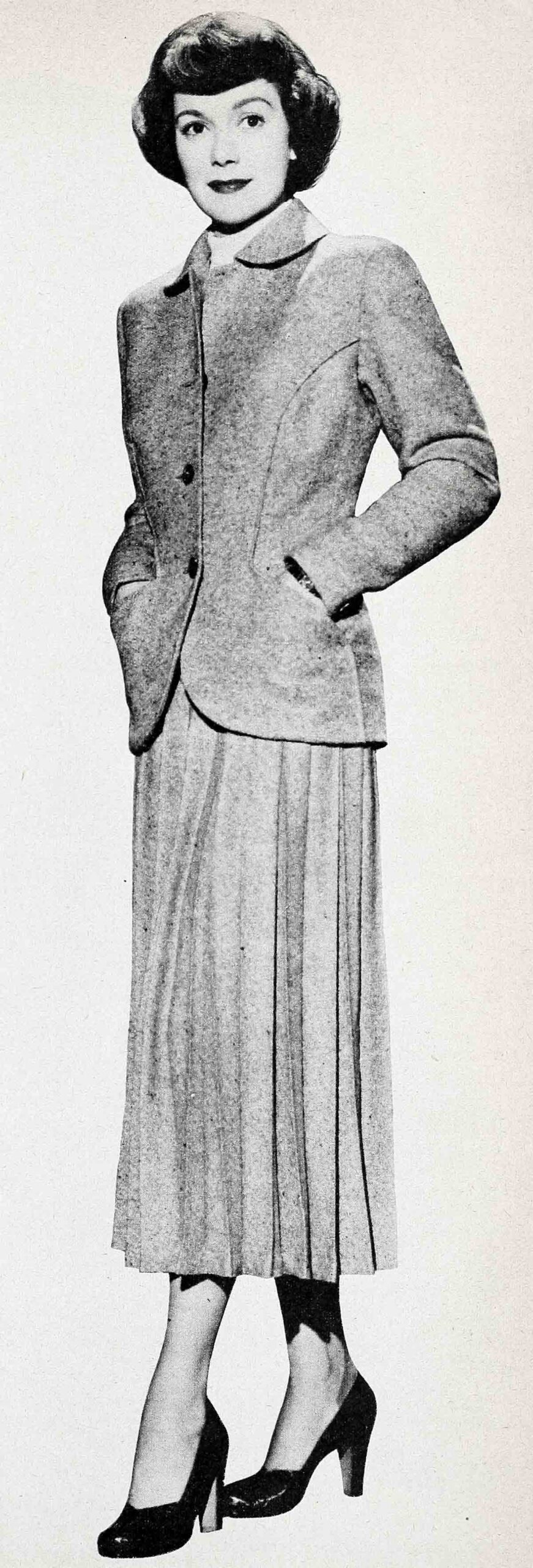
I don’t think I have ever seen a movie star make such a production out of cleanliness. “Craig’s Wife Wyman”has a habit of running her fingers over shelves, mantels and chairs, and heaven help the servants if she finds any dust. She has a habit also of pushing furniture around, especially in the middle of the night when she can’t sleep. “After I have moved it around,” she says, “there is an extra piece left over. This always happens. So I sell it. Then I move the furniture back again to where it was originally, and I need the piece I sold. My friends are getting so they won’t buy my extra pieces anymore.”
For the records. Jane is farsighted. She wears glasses when she reads. When she makes personal appearances she cases the theater ahead of time. One night, in the Middle West, the manager thoughtlessly moved a lamp. Jane came on stage, beaming and bowing and making like a movie star, tripped over the cord, and did a pratfall. She has a passion for tea. She big brown eyes were big blue eyes. She used to wear jingly charm bracelets with huge globs of gold. Today, she goes for pearls. And nothing jingles.
It may come as a surprise, but Jane has a great understanding of people and their problems. She bends over backwards to avoid being rude and tactless. Once, when she was a little girl in St. Joseph (she was born in St. Joseph, Missouri, January 14, 1914, and named Sarah Jane Fulks), she overheard a neighbor say, “With that turned-up nose and those bug eyes no one will ever take that child seriously.” She was a sensitive child, and it made a deep hurt. So, today, she tries not to hurt anyone’s feelings. Makes quite a thing out of it. If there is any ribbing to be done, she confines it strictly to herself.
She likes to rib herself about the Hollywood Man-Power Shortage (which is no joke to dozens of Hollywood glamour dolls). And this again proves her frankness, and her complete lack of front.
“I tell myself,” she says with a grin, “when I am working I’m so wrapped up in my art that I go to bed every night at nine. Well, I’m in bed by nine lots of nights because no one has asked for a date.”
One night during the production of “The Lady Takes a Sailor,” she and Eve Arden (her sub-plotter) decided that men are not really necessary for an evening of fun. They would have a gay dinner and take in a movie. It was a very nice dinner. “Then Eve looked at me, and I looked at Eve. ‘I think . . . Eve began. ‘I think so, too,’ I said. And there I was home in bed again at nine o’clock.”
Because of her even temper and casual manner Jane has long been a pet with the publicity boys and girls. But once she erupted so violently that she made Vesuvius look like a summer replacement. It was the day she was doing the drowning sequence in the tank for “The Lady Takes a Sailor.” One of the columnists came on the set and demanded to talk to Jane. Jane has always been friendly with the Hollywood press, until eight unauthorized stories appeared in the magazines written by writers who claimed to know the “lowdown” on her separation from Ronnie. As Jane has never given out any interviews on that subject she didn’t think the press was very fair. So, since then she has been wary of the typewriter pounders. But she told the publicist to bring the columnist over to her dressing room. “Well,” she said, “what’s your problem, let’s have a go at it.” The columnist proceeded to ask her if there was any truth to the rumor that she was going to have a baby and that Ronnie was remarrying her to save her name. By the time Jane calmed down Warner Brothers was in a shambles.
Want to know how it started? Well, Ronnie, back from England where he made “The Hasty Heart,” was lunching with friends at The Players. Columbia had offered him a picture and he was telling about it. “In the picture I discover my divorced wife is pregnant and I have to come home and remarry her.” Little pitchers aren’t the only things in Hollywood with big ears. A jerk in the next booth heard just enough to send him scampering to the telephone.
Jane is not a particularly happy woman. Millions of women who have far less than Jane are much happier. I think she is too smart for her happiness. Her brain clicks constantly. She learned life the hard way, and knew all the answers before she was out of her teens. Even when she was little more than a kid she was hoofing her heart out at Paramount with another ambitious kid, named Betty Grable. She was searching then, and she’s still searching. Restless and dissatisfied, Jane will probably always be searching. A lot of her acquaintances resent it because Jane isn’t the flip, breezy character she used to be. They accuse her of taking herself too seriously. Well, Jerry Wald sums it up better than I can.
“The remarkable thing about Jane,” says Jerry, “is that she has grown up. Most actresses never do.”
THE END
—BY LIZA WILSON
It is a quote. PHOTOPLAY MAGAZINE MAY 1950


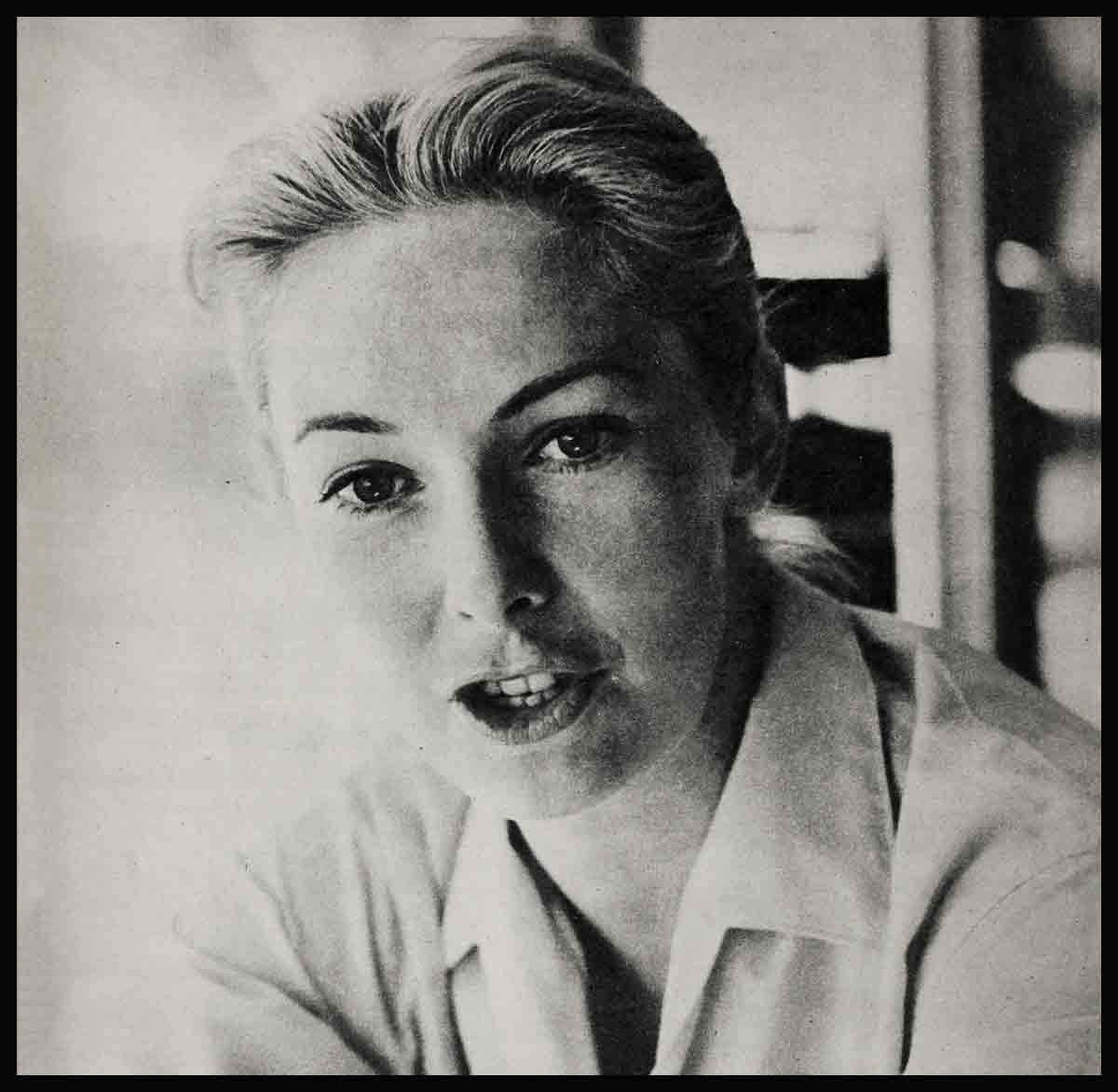

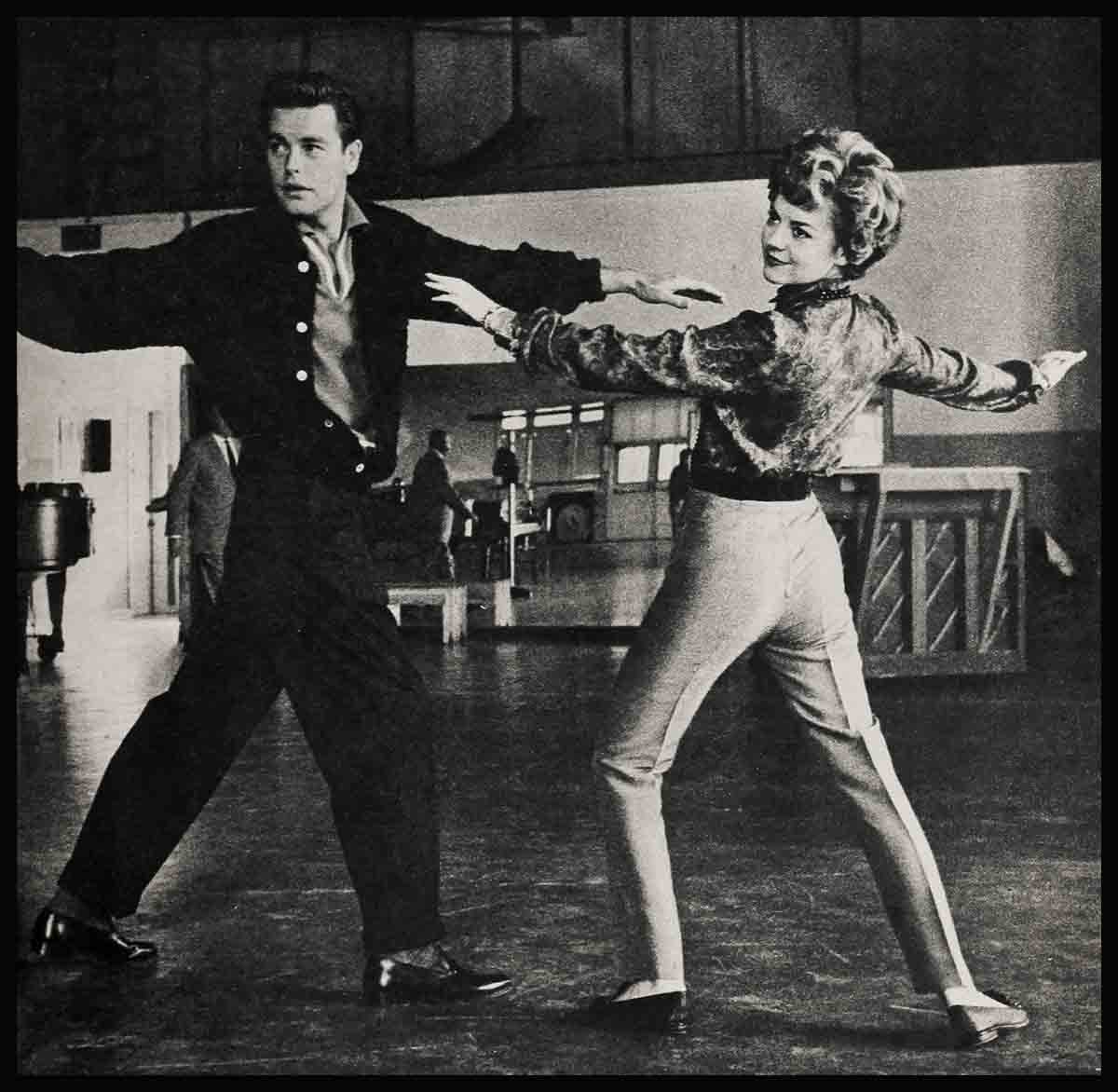
No Comments